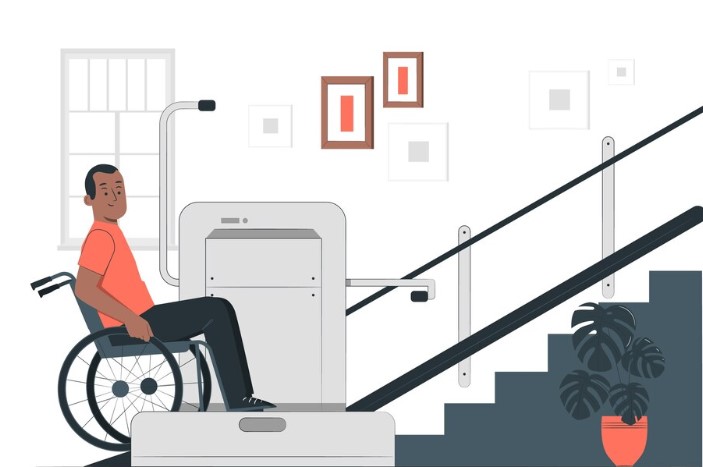
For individuals with mobility challenges, navigating stairs can be one of the most daunting tasks in their daily lives. Whether due to age, injury, or disability, the difficulty of moving between floors can significantly impact independence and quality of life. Stairlifts offer a practical, safe, and reliable solution that makes multi-level homes accessible once again. Here are five ways stairlifts improve daily life for those with mobility challenges.
1. Enhanced Safety and Fall Prevention
One of the most significant benefits of installing a stairlift is the enhanced safety it provides. Stairs are a common site for falls, particularly for seniors or individuals with balance and mobility issues. A stairlift virtually eliminates the risk of tripping, slipping, or losing balance on the stairs. With secure seating, seatbelts, and smooth operation, stairlifts provide a safe and stable way to navigate stairs without the fear of accidents. This added safety gives both the user and their loved ones peace of mind, knowing that the risk of falls is greatly reduced.
2. Increased Independence and Freedom
Stairlifts empower individuals with mobility challenges to move freely between floors without assistance. This independence is invaluable, particularly for those who want to maintain their autonomy in their own homes. With a stairlift, users can effortlessly access all areas of their home, whether it’s going up to the bedroom or down to the laundry room, without relying on a caregiver or family member for help. This independence can greatly boost confidence and improve overall well-being, making daily life more enjoyable.
3. Ease of Use and Convenience
Stairlifts are designed with user-friendliness in mind, making them incredibly easy to operate. With simple controls, typically mounted on the armrest or operated via a remote, users can effortlessly travel up and down the stairs with the push of a button. Many models come with swivel seats, making it easy to get on and off the lift safely. The convenience of a stairlift means that individuals can maintain their routines without disruption, seamlessly integrating this accessibility feature into their everyday lives.
4. Pain Reduction and Physical Relief
For those with conditions like arthritis, joint pain, or other mobility impairments, climbing stairs can be painful and exhausting. Stairlifts provide a comfortable and pain-free way to navigate stairs, reducing the physical strain on joints and muscles. This relief can be especially beneficial for individuals recovering from surgery or dealing with chronic conditions that make stair climbing difficult. By eliminating the need to physically climb stairs, stairlifts help users conserve energy and avoid unnecessary discomfort, allowing them to focus on the activities they enjoy.
5. Supports Aging in Place
As the desire to age in place grows, having a stairlift becomes an essential tool for seniors who wish to remain in their multi-level homes. Stairlifts allow aging individuals to continue living in familiar surroundings without having to make major lifestyle changes or move to a single-level home. This support is crucial for maintaining a sense of continuity and comfort, enabling seniors to stay close to family, friends, and their community. By facilitating safe access to all parts of the home, stairlifts make aging in place a feasible and realistic option.
Conclusion
Stairlifts are more than just a mobility aid—they are a transformative addition that significantly enhances daily life for individuals with mobility challenges. From increasing safety and independence to reducing pain and supporting aging in place, stairlifts offer a range of benefits that help users maintain their quality of life. While some homeowners may consider a DIY installation, working with a professional team ensures that your stairlift is installed correctly, safely, and tailored to your specific needs. Investing in a stairlift is investing in freedom, comfort, and the ability to enjoy your home to its fullest.



